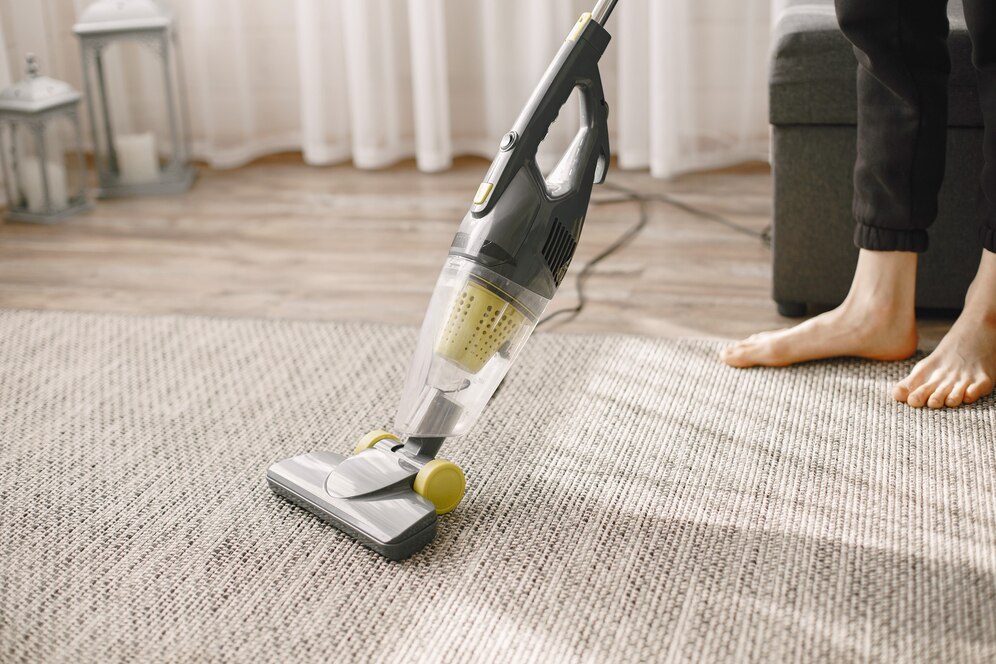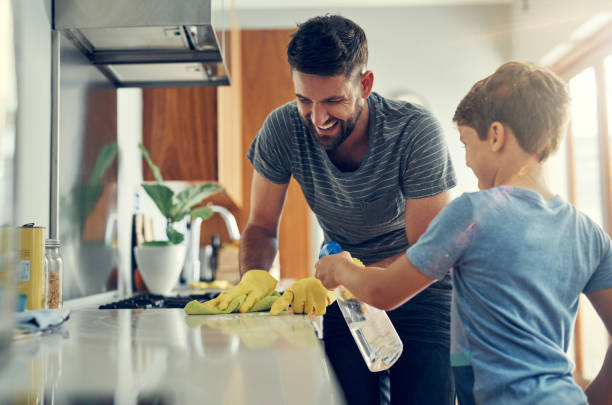Whether you are a homeowner or a business owner, stains are an inevitable part of life. From driveways and patios to the exterior of the building, some stains are easily removed with a simple scrub, while others seem almost impossible to remove. That is where high-pressure cleaning techniques come to the rescue.
So, what is high-pressure cleaning and how can it help you remove even the most stubborn of stains from various surfaces?
Understanding High-Pressure Cleaning
We’d be surprised if you haven’t heard of high-pressure cleaning or seen it being done before. All it is is a simple method of using pressurised water to remove dirt, grim, mould, mildew and stains from a wide variety of surfaces.
The equipment used consists of a high-pressure water pump and a nozzle that can be adjusted to control the pressure and the direction of the water. Due to the pressure, stains can be dislodged, while contaminants that are embedded into surfaces are simply washed away.
All of this is done with water – in many cases, there is no need for chemicals to get surfaces cleaned. For those stains that need a little more, such as graffiti, smoke repair and restorations, at FCT Surface Cleaning, we use a range of environmentally friendly chemicals to help remove tough stains.
How We Remove Stubborn Stains at Your Home or Business
There’s no doubt that some stains can be stubborn to remove, but by doing so, your Perth home or business will look much more welcoming. There are a few steps we take in removing stubborn stains from your property.
Prepare the Surface: Before we start pressure washing, we remove any loose debris, such as leaves, twigs, or dirt. We also make sure we cover delicate plants and objects nearby to protect them from the high-pressure stream of water.
Choose the Right Pressure and Nozzle: Different stains and surfaces require different pressure settings and nozzles. We often start with a lower pressure setting and a wide-angle nozzle to prevent damaging the surface, gradually increasing the pressure if needed, but being cautious not to go too high, as excessive pressure can cause damage.
Apply Detergent: For particularly stubborn stains, we use an environmentally friendly detergent specifically designed for pressure washing. It is a simple matter of applying the detergent evenly to the stained area and allowing it to sit for a few minutes before starting the pressure washer.
Maintain a Safe Distance: For both us and our customers, we recommend maintaining a safe distance from the pressure washer. Because the water is highly pressurised, they can cause damage if you get too close. We also ensure that the pressure washer wand is held at a safe distance from the surface to prevent damage.
Rinse Thoroughly: After we’ve successfully removed the stains, we thoroughly rinse the area to remove any remaining detergent and debris.
Repeat if Necessary: Unfortunately, some stubborn stains aren’t as easy to remove as others and may require multiple cleanings. This is essential so that the surface isn’t damaged by going too hard.
Types of Stains High-Pressure Cleaning Can Remove
High-pressure cleaning can be used to remove a wide range of stains. Whether it be commercial, residential, or even industrial, our team have the experience and know how to remove grease, mildew, rust, graffiti, smoke and more.
Grease and Oil Stains: Whether it’s on your garage floor or driveway, grease and oil stains can be particularly stubborn. High-pressure cleaning can break down these stains and wash them away, leaving the surface looking clean and fresh.
Mould and Mildew: Mould and mildew can thrive in damp and shaded areas, such as decks, patios, and the exterior of your home. High-pressure cleaning can remove these unsightly growths, improving the overall appearance and safety of your property.
Rust Stains: Rust stains can be a real eyesore, especially on concrete or metal surfaces. Pressure washing can help eliminate these stains and restore the surface to its former glory.
Graffiti: Graffiti is not only unsightly but also can be difficult to remove. High-pressure cleaning can effectively strip away graffiti from walls and other surfaces without causing damage.
Stains on Building Exterior: The exterior siding of your home can accumulate dirt, algae, and other stains over time. Pressure washing can rejuvenate the look of your home’s facade, making it appear as good as new.
At FCT Surface Cleaning, we also provide biohazard cleaning, where we clean and restore any area in the home, business, or other crime or trauma scene that has been affected by the presence of biological, infectious or toxic waste. Our team also have specialised fire and water damage restoration training and the experience to quickly clean up and restore your home or business to pre-fire condition. We can remove that long lasting smoke odour and deep-clean soot from upholstery and carpet.
Contamination cleaning is also a service we provide. Our team has a high level of specialist decontamination training and expertise. We offer drug cleaning services that are affordable, effective, and compliant with national standards. Our professional cleaning team is highly trained to ensure that the property is thoroughly cleaned, and key rooms and surfaces are meticulously tested for contamination levels. At FCT Cleaning we conduct contamination testing both before and after the cleaning process.
How To Prevent Exterior Stains on Your Building
Preventing exterior stains on your building, whether it be at home or work, requires proactive maintenance and protective measures. Stains on the exterior of your home can come from various sources, including mould, mildew, algae, water damage, and environmental factors.
Here are our top tips to preventing exterior stains:
Regular Cleaning: One of the most effective ways to prevent exterior stains is to clean the surfaces regularly. Use a pressure washer, a garden hose with a nozzle attachment, or a soft brush and a mild detergent to clean dirt, dust, and debris from surfaces such as siding, brick, concrete, and wood. Pay particular attention to areas prone to staining, like shaded spots.
Gutter Maintenance: Clean your gutters and downpipes regularly to prevent water from overflowing and splashing onto your exterior walls. Clogged gutters can lead to water stains and damage to siding and trim (not to mention internal damage to your building). Install gutter guards if necessary to reduce debris buildup but also schedule in regular gutter cleaning.
Roof Maintenance: Regularly inspect and maintain your roof to prevent water leaks and stains. Replace damaged or missing roof tiles promptly and ensure that flashing around skylights or vents are in good condition to prevent water getting into the property.
Trim Trees and Shrubs: Environmental mould can cause a lot of unsightly stains so you should trim back trees and shrubs that are close to your building. This can reduce the amount of shade and moisture near your exterior walls, which can help prevent the growth of mould, mildew, and algae. If you don’t want to heavily cut back trees, we recommend regular cleaning.
Seal and Paint: Apply appropriate sealants or paint to exterior surfaces to create a protective barrier. For timber buildings, consider staining or sealing to prevent water damage. For other materials, like brick or concrete, a waterproofing sealer can be beneficial.
Use Mildew-Resistant Paint: If you’re painting your exterior, use paint with mildew-resistant properties. This can help prevent the growth of mildew and mould on the painted surfaces.
Keep Exterior Surfaces Dry: This one can be a bit difficult, but after rain, try to keep exterior surfaces as dry as possible. Towel dry or squeegee water off surfaces like decks, steps, and patios to prevent stains and water damage.
Regular Inspections: Perform regular inspections of your building’s exterior to catch any issues early. Look for signs of water damage, cracks, or areas where stains may be forming.
By taking these preventative measures, you can help keep your building’s exterior looking clean and free from stains, prolonging the life of your roofing, and other exterior materials. Regular maintenance is key to preventing stains and protecting your investment in your home or business and can help cut down on costs in the long run.
How often Should You Remove Stubborn Stains?
The frequency of pressure washing your building’s exterior can vary depending on several factors, including your location, the type of exterior material, and the level of environmental exposure.
Here are some general guidelines for how often you might consider pressure washing your building.
Annually: In most cases, an annual pressure washing is a good starting point. This helps remove dirt, dust, pollen, and other debris that can accumulate over the course of a year. Annual cleaning is particularly advisable if you live in an area with a lot of trees or near the ocean.
Bi-Annually: If you live in a coastal location on the water, you may benefit from pressure washing your building twice a year to prevent the buildup of mould, mildew, and algae. Spring and autumn are good times for these semi-annual cleanings.
Every 2-3 Years: Homes with cladding might not need to be pressure washed as frequently as those with timber exteriors. You can often get away with cleaning every 2 to 3 years to maintain the appearance of the exterior.
On Demand: Buildings in some areas may not accumulate as much dirt and grime, so pressure washing can be done as needed. You can observe your building’s exterior and clean it when you notice significant buildup or stains, keeping in mind that the longer between cleans, the longer it may take to remove the stubborn stains.
Special Circumstances: If your building is near construction sites, areas with lots of trees, or industrial areas that generate a lot of dust and dirt, you may need to clean your building more often. Similarly, homes with light-coloured cladding may show stains more prominently and may require more frequent cleaning.
Remember that the type of surface you’re cleaning matters too. Decks and patios that are exposed to the elements may need more frequent pressure washing, especially if they become slippery due to algae or moss growth, whereas your building itself may only need to be cleaned once a year.
Because some materials require special care when cleaning under pressure, hiring a professional pressure washing company can ensure that the cleaning is done safely and effectively.
High-pressure cleaning techniques are a great solution for removing stubborn stains from a variety of surfaces. Whether you’re tackling oil stains on your driveway or unsightly mould on your patio, pressure washing can restore the cleanliness of your outdoor spaces and building exterior.
Looking to have your home or business pressure cleaned? Get in contact.


